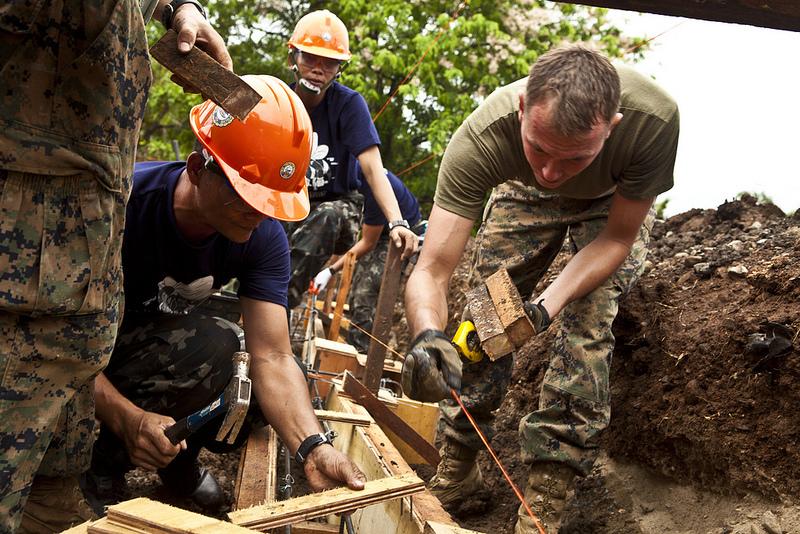In January 2012, the Obama administration released a new Defense Strategic Guidance (PDF) that explicitly enunciated the need to re-engage the Asia-Pacific. Two principal questions have since arisen as a result of this reorientation. First, what is the current Asia-Pacific security environment and how is this likely to evolve over the medium to long term? Second, what roles can the American military play to positively shape the geostrategic outlook in this part of the world? While these questions have been framed in a region-wide context, the focus of Washington’s so-called ‘Asian pivot’ has been largely devoted to Southeast Asia. This is both because of the region’s dynamic economic growth and due to the fact that it’s clearly an area of interest to China—which is now arguably the United States’ main competitor in the international system.
Presently, the security environment in Southeast Asia is largely benign. There’s practically no risk of a major inter-state war in the region and virtually every government has benefited from a high degree of internal legitimacy afforded by sustained economic growth. Just as significantly, none of the sub-state conflict groups in this part of the world enjoy any degree of external backing and all remain largely localised concerns.
The one exception to this positive picture is the South China Sea where Beijing has steadily asserted its self-proclaimed sovereignty in the area. Even so, there’s no indication that China is prepared to undertake military action to enforce its territorial claims, preferring to resolve the issue diplomatically through bilateral negotiations with each of the parties involved.
Within this favorable context there are four major roles that the US Army could play in helping to shape the Southeast Asian security environment over the near-term: (i) supporting defense reform and modernisation; (ii) facilitating humanitarian assistance and disaster relief (HADR) operations; (iii) rendering aid to ameliorate non-traditional threat contingencies such as terrorism and cross-border crime; and (iv) helping to balance China’s increased influence in Southeast Asia. Assuming a continuation of the status quo, the broad thrust of these mission statements will remain largely consistent to 2020.
However, should the regional strategic picture dramatically deteriorate, Washington will need to consider instituting a more involved role for the Army. Perhaps one of the biggest harbingers of change would be stalled economic growth as a result of a tighter energy market. A number of adverse developments could subsequently ensue.
Governments that had derived legitimacy from rapid development would suffer from a lack of grass-roots support. Latent radical Islamist entities in Indonesia, Malaysia, Mindanao (in the Philippines) and Thailand’s ‘deep south’ could exploit a serious downturn as justification for a violent return to traditional Muslim values. State-to-state rivalries would be likely to take on greater relevance—especially in the South China Sea where all parties could be expected to more forcibly exert their presence in the region to secure vital untapped oil reserves. Finally, natural disasters—driven by climate change and unsustainable urbanisation—would become progressively more difficult to manage both on account of reduced budgets available for boosting HADR preparedness, and due to the fact this diminished expenditure would necessarily be pitched against other areas of government spending.
To meet these challenges, the United States will need to adopt an agile strategy that’s ‘thin’ in physical presence but ‘broad’ in programmatic execution. To this end, there are four specific areas where the Army could usefully consider focusing its efforts:
- Enhancing the capabilities of partner nations to meet both conventional and non-traditional threats by expanding the number of bilateral military exercises in the region. This would help to build more viable multilateral security arrangements that don’t automatically default back to ‘lowest common denominator’ cooperative stances and assist with the procurement of appropriate assets to augment the self-defense of ASEAN states;
- Concluding new basing agreements for hosting small, mission-oriented expeditionary forces. Deployments of this kind would overcome the ‘tyranny of distance’ that has historically complicated Washington’s military engagement in East Asia while also providing greater scope for a robust surge capacity;
- Expanding support for HADR activities by funding additional tabletop exercises, gifting ground transport and airlift assets and helping to establish regional disaster assistance hubs; and
- Initiating appropriate responses to counter a more outwardly adventurous China by putting in place defense/deterrent arrangements that are affordable and which don’t unduly provoke Beijing into taking unilateral action of the sort that could directly threaten U.S. and allied interests.
Peter Chalk is a senior political scientist at the RAND Corporation. This post is a summary of Peter’s latest RAND publication, ‘The US Army in Southeast Asia: near-term and long-term roles’, which is available for download for free here. Image courtesy of Flickr user Balikatan2012.
